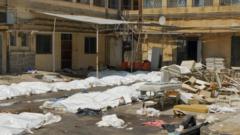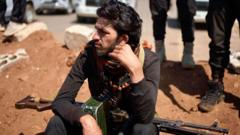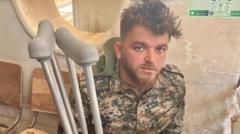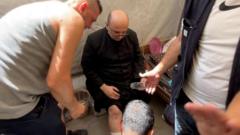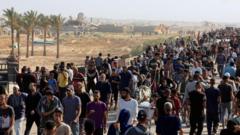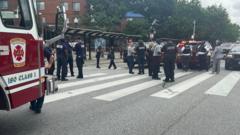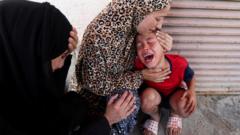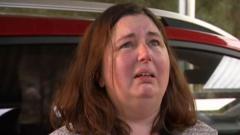The Catholic world waits anxiously as Pope Francis, now 88 years old, faces severe health challenges, prompting discussions about the ceremonial protocols should he pass away.
Pope Francis in Critical Condition: Implications of a Possible Transition

Pope Francis in Critical Condition: Implications of a Possible Transition
As Pope Francis battles a serious lung infection, the Vatican prepares for potential changes in leadership.
As Pope Francis continues to fight for his life at Policlinico Agostino Gemelli in Rome, where he is being treated for a complex lung infection, the Catholic community grapples with uncertainty. Doctors reported that the 88-year-old pontiff had experienced a respiratory crisis, leading to pneumonia in both lungs along with mild kidney failure. The Vatican stated he had recently regained consciousness and was responding to medical treatment, but the prognosis remains guarded due to his age and medical history.
Should the situation worsen, the Vatican has established protocols to manage such a profound change in leadership. The death of a pope triggers a series of carefully orchestrated ceremonies that have developed over centuries. The cardinal chamberlain of the Holy Roman Church becomes the acting administrator and confirms the pontiff's death. Traditionally, the pope's body is dressed in a white cassock and placed in a chapel, followed by a public wake for mourners.
As speculations unfold, cardinals and faithful have begun gathering outside St. Peter's Basilica, offering prayers for Pope Francis's recovery, highlighting the united hope for his return to health. In the coming days, the Vatican is expected to release further updates on his condition, while the church prepares for the inevitable, reminding the world of the rich traditions that guide them through moments of transition. Should the need arise, a conclave will assemble to elect the next pope, with the ceremonial event signaled by the iconic white smoke from the Sistine Chapel, marking the Catholic Church’s next chapter.
Should the situation worsen, the Vatican has established protocols to manage such a profound change in leadership. The death of a pope triggers a series of carefully orchestrated ceremonies that have developed over centuries. The cardinal chamberlain of the Holy Roman Church becomes the acting administrator and confirms the pontiff's death. Traditionally, the pope's body is dressed in a white cassock and placed in a chapel, followed by a public wake for mourners.
As speculations unfold, cardinals and faithful have begun gathering outside St. Peter's Basilica, offering prayers for Pope Francis's recovery, highlighting the united hope for his return to health. In the coming days, the Vatican is expected to release further updates on his condition, while the church prepares for the inevitable, reminding the world of the rich traditions that guide them through moments of transition. Should the need arise, a conclave will assemble to elect the next pope, with the ceremonial event signaled by the iconic white smoke from the Sistine Chapel, marking the Catholic Church’s next chapter.



